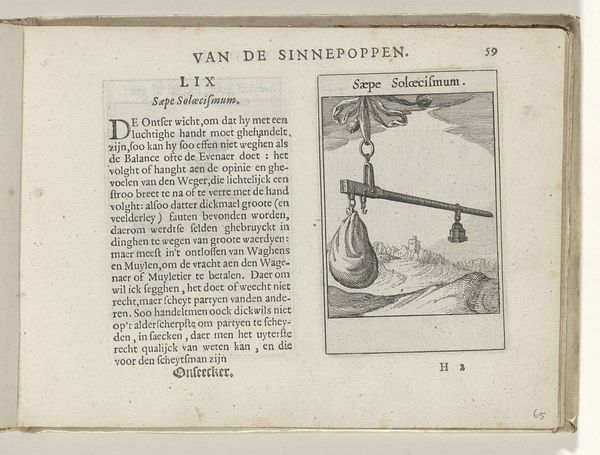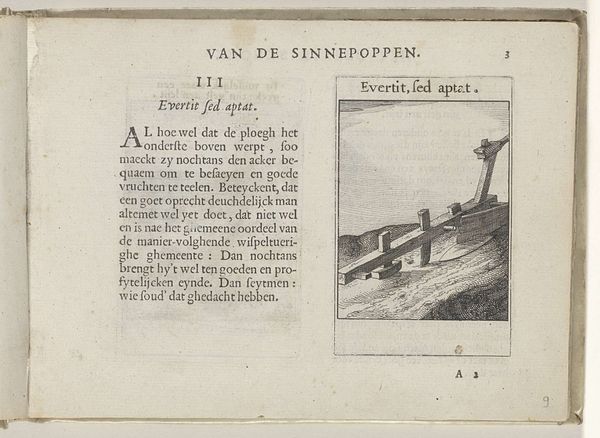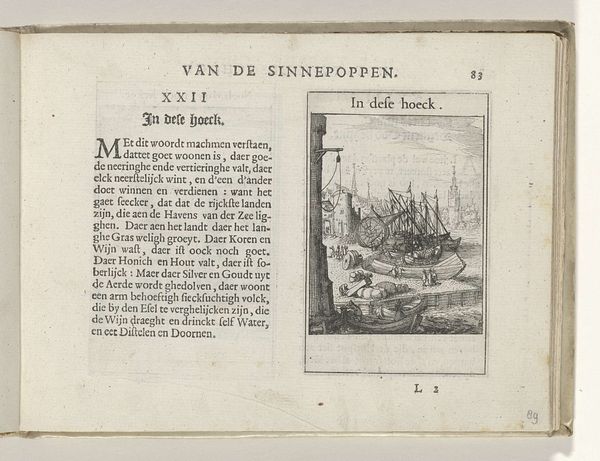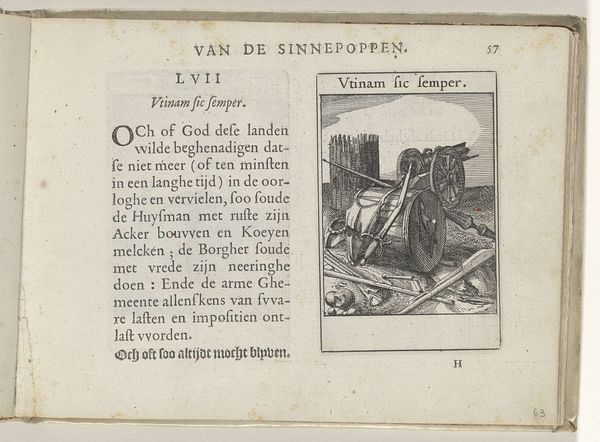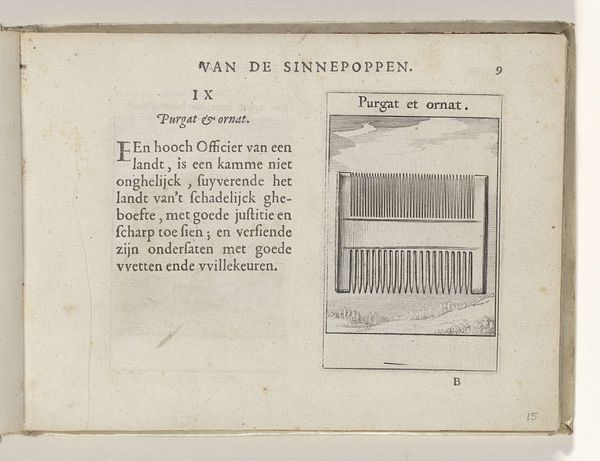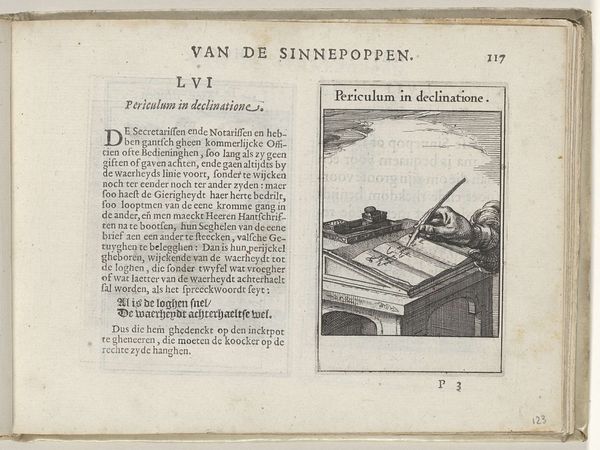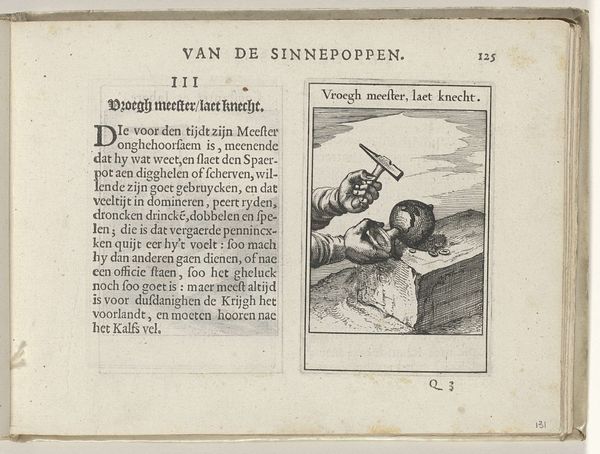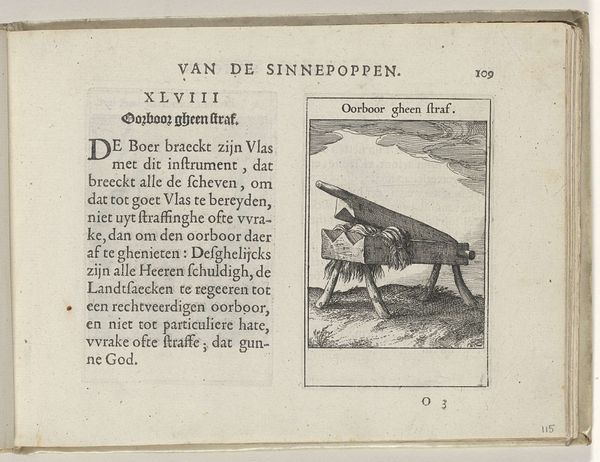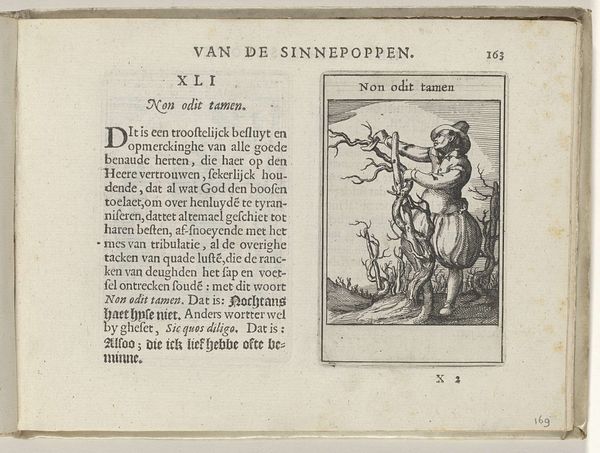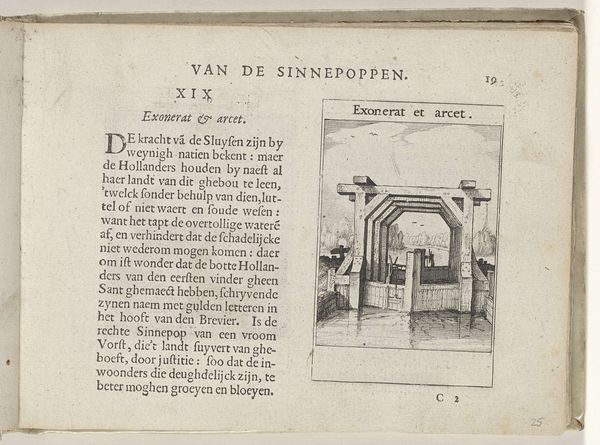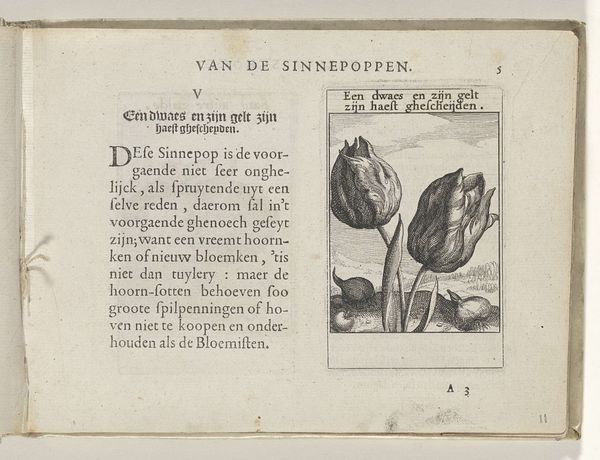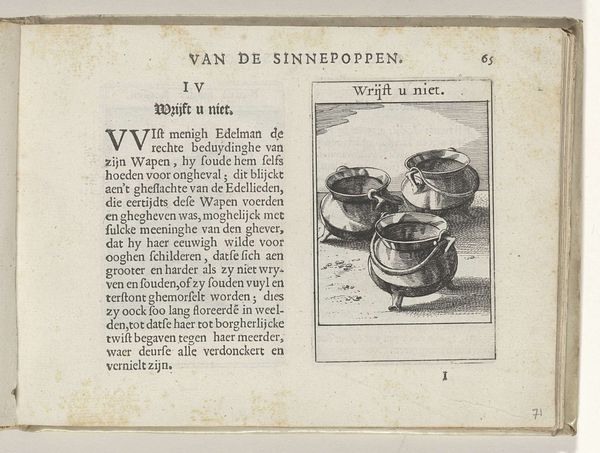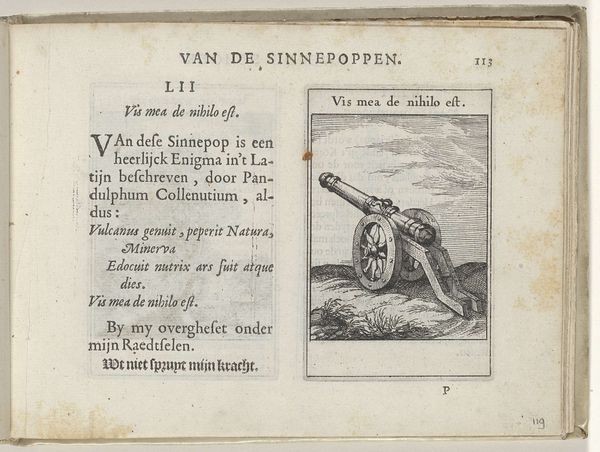
Dimensions: height 137 mm, width 188 mm, height 95 mm, width 60 mm
Copyright: Rijks Museum: Open Domain
This is an emblem print called "One Alone," made by Roemer Visscher, likely in the early 17th century. It’s an etching, meaning that a metal plate, probably copper, was coated with wax, the design scratched into the wax, and then acid was applied, biting the lines into the metal. The result is a crisp, linear image: a bird perched atop a pole, surrounded by what look like darts or arrows. The printmaking process, with its repeatable matrix, speaks to the rise of early capitalism and the commodification of images. Etchings like this weren’t unique objects; they were made to be disseminated widely. The image's clarity and detail, achieved through skilled metalworking, highlights the period's fascination with precision and control. Yet, there's also a sense of fragility – the delicate lines could easily be worn away with excessive printing. This tension reminds us that even mass-produced items retain the mark of the hand and the inherent qualities of their materials. By considering these aspects, we gain a deeper appreciation for the artistic and cultural significance of the artwork.
Comments
No comments
Be the first to comment and join the conversation on the ultimate creative platform.
